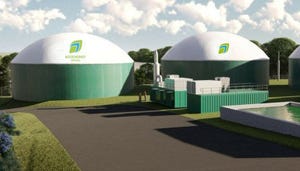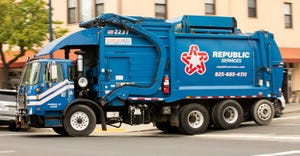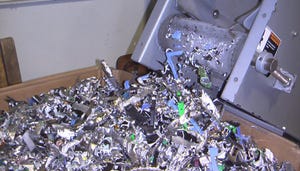TECHNOLOGY: Researchers Test Fuel Cells To Recover LFG
April 1, 1995
William D. Siuru
Approximately 300 megawatts of electricity currently are generated from landfill methane, according to the California Environmental Pro-tection Agency (EPA). However, if individual fuel cell "power plants" were used at landfills, 6,000 mega-watts of electricity could be generated from methane, according to a study by the Electric Power Re-search Institute (EPRI), Palo Alto, Calif.
Like batteries, these fuel cells e-lectrochemically convert the fuel's energy into electricity using flameless oxidation. The combustion-free process reportedly is much cleaner than other recovery methods. In fact, the fuel cells only emit water vapor and carbon dioxide as by-products.
In addition, the conversion re-portedly is more efficient than a power plant's process, where the combusted fuel heats a boiler to create steam for the turbine/generator. In a fuel cell, landfill methane and oxygen flow through porous e-lectrodes that are barely affected in the process. In contrast, the electrodes in a battery act as the "fuel" and "oxidizer" and are used up in the reaction.
While there are several ways to convert methane to electrical energy, using molten carbonate fuel cells (MCFC) is the most promising technique. In these fuel cells (see diagram), the methane gas, diluted with carbon dioxide, produces electricity without any moving parts.
At the MCFC's cathode, oxygen and carbon dioxide react with a-vailable electrons to form carbonate ions, which migrate through the molten carbonate electrolyte toward the anode. There, the carbonate ions react with hydrogen and carbon monoxide, which is in-ternally reformed from water and the methane fuel. Electrons re-leased in the anode reactions produce a flow of electricity.
Fuel cells are noted for their efficiency and their modularity. For in-stance, EPRI is proposing small, two-megawatt carbonate fuel cells for use at landfills with on-site power or tied with a power grid.
The two-megawatt power plant module (see inset) will consist of 20 fuel cell stacks, each built up of many cell "sandwiches" of anode, electrolyte and cathode. Because the high-temperature MCFC can reform the methane fuel to hydrogen inside the stack, bulky external fuel-processing equipment can be eliminated. As a result, MCFC plants reportedly will be about half the size of commercially available phosphoric acid units of the same capacity.
Finding a cost-effective way to clean up the landfill gases for use in the fuel cells has been a great challenge for researchers. While landfill gases are inexpensive, they are very dirty in their natural state.
Two methane-to-electricity fuel cell demonstrations are currently under way. For example, EPA is testing a phosphoric acid fuel cell (PAFC) project at a southern Cal-ifornia landfill. Although PAFCs currently are the most developed fuel cells, their disadvantages in-clude the need for an external fuel processor and combustion to preheat the gas and steam mixture be-fore processing it in the fuel cells. This process significantly adds to the unit's costs and space requirements and decreases its efficiency.
EPRI is sponsoring the second demonstration at a landfill in An-oka County, Minn. The facility uses a small, modified 100-kilowatt modular MCFC pilot plant from Destec's coal gasification plant in Plaquemine, La. Because the mol-ten carbonate fuel cell operates at approximately 1,200 degrees Fahr-enheit, it does not need combustion. As a result, it reportedly is more reliable, smaller, easier to operate and potentially less expensive. In late 1995, extensive operational tests will be conducted to de-termine the economic feasibility of carbonate fuel cell technology.
You May Also Like


